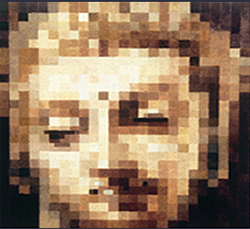
Gandhara - an unutilized asset of Pakistan
Wednesday, December 19, 2012 - Islamabad—Few Pakistanis are aware that Gandhara art and culture is exceptionally attractive for millions of foreigners in East and West; and Pakistan can earn millions by promoting this historic site. To highlight the significance of the remarkable centuries-old civilization, Gandhara lovers gathered on Tuesday in Islamabad at Pakistan National Council of Arts (PNCA) and reiterated their deep interest on the subject.
The awareness lecture on ‘The Unique Cultural Heritage of Gandhara’ was arranged by Gandhara Art and Culture Association (GACA), and Oxford University Press in collaboration with PNCA and Ministry of National Heritage. The dreary ambiance suggested that Pakistanis are less interested in promoting Gandhara than their foreigner friends, particularly Gandhara-lovers from East Asia. “This is the right time to make Gandhara our center of attention as world scholars are intensely interested in Gandhara civilization,” said Dr. Kyo Soon Park, scholar and founder of GACA.
Dr. Kyo Soon Park urged the Ministers and the participants for collective efforts to encourage the interest in Gandhara. In her visual presentation, she contrasted the beauty two masterpieces of art, ‘Fasting Buddha’ sculpture and the painting of the Mona Lisa, in which the serene face and subtle smile of the skin-and-bones Buddha appeared as appeasing as Mona Lisa’s smile. She noted that if 6 million people go to view the Mona Lisa painting France every year then why can’t we attract same number for Gandhara.
An expert on civilization, Dr Abdul Rehman presented his lecture titled as ‘Pakistan Gandhara Heritage’ highlighting the importance of this great culture. Asaf Ghafoor, Secretary, Ministry of National Heritage threw light on the significance of Gandhara for Pakistan and urged awareness among the children by adding it in school curriculum.
Gandhara is noted for the distinctive art that propagated Buddhism through the images carved and made in stone, stucco, terracotta and bronze, mostly enshrined in the stupas and monasteries. The Gandhara art has influenced every part of Buddhist world including Tibet, Sri Lanka, Burma, Korea, Indonesia, Thailand, China, Japan and Central Asian states. Taxila (a short drive from Islamabad), was once the centre of Gandhara, and is considered as a noteworthy archaeological sites in the world. But little do we know about it, regretted the speakers.
Syed Aqil Shah, Culture Minister of KPK, coming from the home of Gandhara, expressed his desire to bring back Buddhist tourists to this interesting site. He noted that “KPK is proud to maintain nine out of twenty museums in Pakistan”.
The seminar coincided with the launch of the book ‘Wavell and the Dying Days of the Raj - Britain’s Penultimate Viceroy in India’ by Muhammad Iqbal Chawla. The book seeks to analyze the deeper and complex undercurrents of Lord Wavell’s viceroyalty while uncovering the leading characters of that time. Dr Chawla, who teaches history at Punjab University, discussed the similarities between two of the largest religions, Islam and Buddhism> He said, moderation in life and respect for humanity is at the center of both beliefs.
The participants deliberated on the significance of Gandhara Art, its impact on the region and the possibilities of promoting it to promote the values of peace and tolerance preached by Buddha and his disciples.
 Home | About Us | Gandhara Renaissance | Venerable Monk Speech | Events & Activities | Contact Us
Home | About Us | Gandhara Renaissance | Venerable Monk Speech | Events & Activities | Contact Uswww.gandharaartandculture.org © All Rights Reserved 1998-2025


